What is Topography? The Definitive Guide
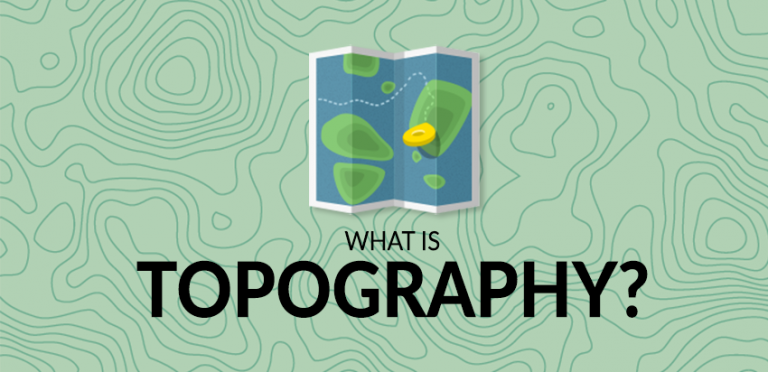
DEFINITION:
Topography shows how the land looks. A topographic map displays whether it’s flat, hilly, mountainous, or has valleys, rivers, and other natural or man-made features.
What is Topography?
Today you’re going to learn everything about topography like some of the great USGS topo maps you can download.
In this guide, you’ll find out:
- What is topography?
- Who uses topographic maps?
- What are topographic surveys?
And much more. Let’s dive right in.
The Definition of Topography
Topography is the study of the land surface. In particular, it lays the underlying foundation of a landscape. For example, topography refers to mountains, valleys, rivers, or craters on the surface.
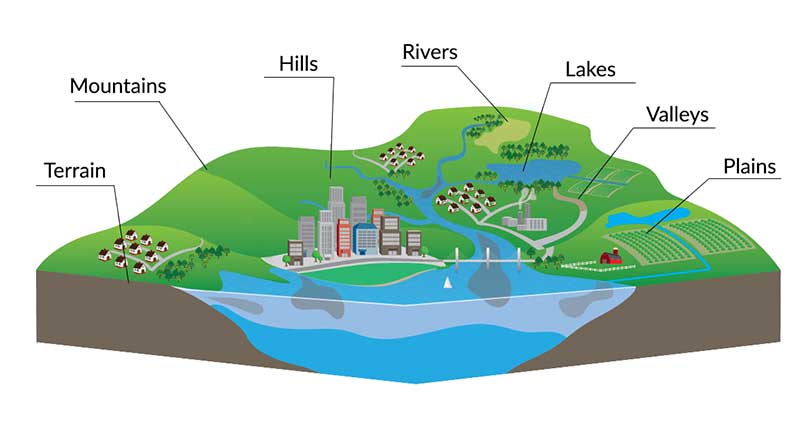
The origin of topography comes from “topo” for “place” and “graphia” for “writing”. It’s closely related to geodesy and surveying which are concerned with accurately measuring the land surface. And it’s also closely tied to geography and mapping systems like GIS.
Elevation is the distinguishing factor for topographic maps. In GIS, we use digital elevation models for the terrain. Nine out of ten topographic maps show contour lines, which are just lines of equal elevation. The narrow definition of topography is specific to the arrangement of landforms.
But in a broader sense, it incorporates natural and artificial features. For example, topographic maps often tie in administrative boundaries, cities, hydrography, parks, landmarks, transportation, and buildings.
READ MORE: 5 Free Global DEM Data Sources – Digital Elevation Models
Relief and Contours
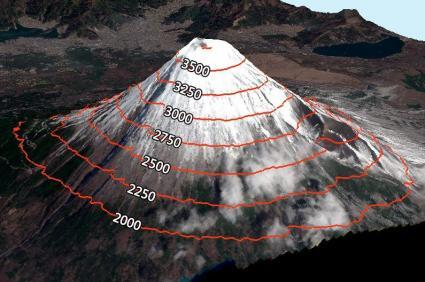
Contour lines (isolines) connect points of equal elevation. By reading contours, we interpret height, slope, and shape in topographic maps.
If contours are close together, the slope is steep. But when contours are spread apart, the slope is more gradual.
We use contours for mountains, valleys, and bathymetry. For example, Mount Fuji stands at 3,776 meters above sea level. At 250-meter spacing, each contour line represents equal elevations. Almost at the peak of Mount Fuji, it’s a 3,750-meter contour line.
Examples of Topography in Maps

There’s no “world authority” in topographic mapping. Instead, each country sets its own standards and priorities. Most often the case, each mapping agency designs its topographic maps with a specific goal in mind.
For example, constructing a new highway might drive a topographic map to feature woodland cover, soil types, or rock classification along the route. Over time, topographic map series often get periodic updates. But the truth is, they can be complex and take years to create.
In the United States, the first USGS topographic map was surveyed in 1892. Since then, map revisions have continued for over 125+ years. The USGS produces topo maps at 1:250,000, 1:100,000, 1:63,360, and 1:24,000. The most common is the 7.5-minute quadrangle series where one inch in the map represents 24,000 inches on the ground.
Another example of a topographic map is the USGS Tapestry of Time and Terrain. This colorful map overlays topography (hillshade) with underlying rock formations. This helps unravel the geologic history of the continent, such as mountain-building events.
Topography Applications and Uses
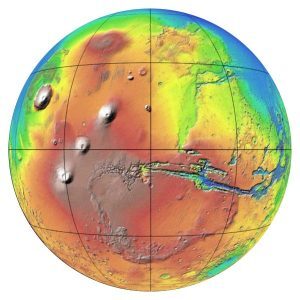
Topographic maps show how rivers flow, how high mountains rise, and how steep valleys descend. They lay out the land as in these examples:
- Engineers use topographic maps to plan a road, construct a cell tower, or plan a hydroelectric dam.
- Geologists use topography to understand the tectonic activity, landforms, and where to dig a mine.
- Hikers use topographic maps to find trails and the steepness of slopes to plan their ascent.
- Astronomers study topography outside Earth like on the moon, Mars, or an asteroid.
- Climate scientists tie topography into climate models to recognize air and water flow.
As landscapes evolve and technology advances, topographers face an uphill battle for accuracy and completeness (pardon the pun).
READ MORE: 1000 GIS Applications & Uses – How GIS Is Changing the World
Topography Analysis
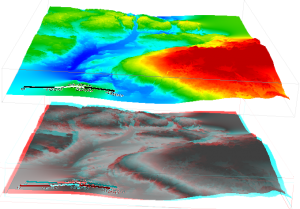
If you want to perform any type of topographic analysis, we highly recommend SAGA GIS. It’s completely free and open source. Specifically, the Topography Analysis Toolkit is a perfect fit for most types of landscape analysis.
It’s so good that you can’t find most of these tools in commercial software. In particular, it includes a range of morphometry, hypsometry, and other specialty tools. Tools like ruggedness, slope, aspect, and curvature can really characterize the terrain.
If you want to classify the types of landforms, SAGA GIS has out-of-the-box tools that do just that. Lastly, we use the topographic position and wetness index to characterize drainage patterns. Here’s our guide to SAGA GIS for more tips and tricks.
READ MORE: A Topographic Profile of Arizona’s Massive Meteor Crater
Final Thoughts
The topography is all about location, location, location. Specifically, it’s how topography relates to relief.
Today, you’ve learned that topography is the arrangement of natural and artificial features in the world.
Engineers, geologists, and even astronomers use these types of maps for reconnaissance, planning, and characterizing the land.
Is there anything else you want to learn about topography? Please let us know with a comment below.



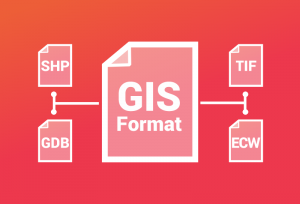
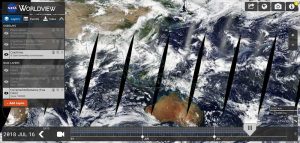
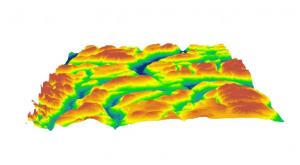

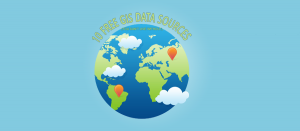
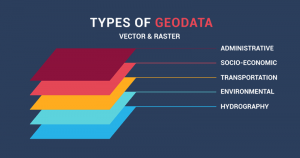
THANKS
I’ve just come back from a road trip out west, & I’m really struck by the topography of Wyoming, which I have limited experience with. I’m looking for names geo forms like steppes? Hoodoos? Buttes? Arroyos? More basic stuff like that.
Thanks!
Have you seen our map of Wyoming? It has some of the physical geography of Wyoming – https://gisgeography.com/wyoming-map/
This was very good
Thank you so much for the interesting information. I am a research scholar in English Literature, and working on Travelogues on Afghanistan. The theories which I use are” Topography, Geopoetics, Space and Spatiality, and Interspatiality”.
Thanking you so much
Thank you so much for your help.
Thanks for the information. Do you know of any dictionaries that has exclusive topography terms?
Thanks alot
Thanks a lot. Can you pin Topo data to Google Earth?
Great content. It’s appreciated
What site can one easily download topo data.
I’ll be posting on topo data sources later this year. Thanks for the idea